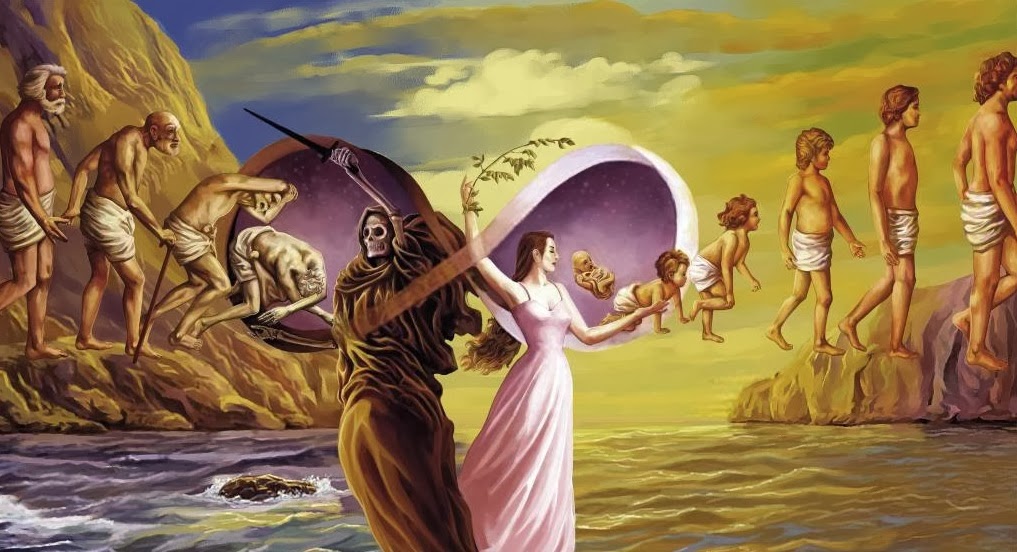
In Hinduism the present life is considered to be the result of many lifetimes of past desires, actions and the results of those actions. The results of these previous actions are unfolding at every moment. Some actions are mature and bearing fruit at the present moment, other actions are laying as “seed” waiting to mature at a future time. All that we have done in the past creates who we are in the present and all that we do in the present is creating who we will be in the future. In this way, there is great cycle of desire, action and reaction that drives the wheel of life, and as a result, all beings are forced to remain within this world in order to experience the fruit of their desires and actions. Sometimes these fruits are called papa and punya. Desire and action are said to be the source of reincarnation. Beings continue to “rotate” through endless lifetimes in this physical world. Sometimes the being is in heaven (nice places), sometimes in the middle regions (medium places) and sometimes in hellish realms. This rotation through endless lifetimes is the process of reincarnation called samsara in Sanskrit. The ultimate goal of life in Hinduism is to break this cycle of reincarnation, to escape samsara. Breaking this cycle is done through the process of yoga, and freedom or liberation from the cycle of rebirth is called moksha or mukti.
A slightly different version of moksha is nirvana. Literally the word nivana means “extinguishing” and in this case it means extinguishing one’s material existence. Sometimes one’s desire which leads to action and reaction is compared to a flame. “The blazing fire of material life,” is an expression sometimes heard. Extinguish or “put out” one’s material existence and one has achieved liberation. This is nirvana. The word nirvana is used more in Buddhism than in Hinduism.